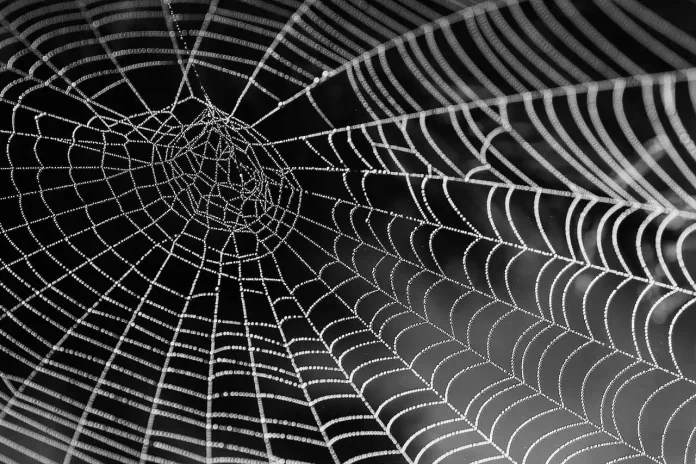“From Microbes to Marvels: Engineering Synthetic Spider Silk through Yeast Biotechnology”
Absolutely, I’d be delighted to weave this tale with threads of enthusiasm and expertise!
In the ever-evolving world of textiles, groundbreaking innovations constantly push the boundaries of what fabrics can achieve. Amid these advancements, one remarkable endeavor has captivated the imaginations of scientists, designers, and enthusiasts alike – the creation of real spider silk using yeast. If you’re as fascinated by the intersection of biology and textiles as I am, prepare to be thrilled by this intriguing blend of biotechnology and material science that’s making headlines.
https://youtu.be/2hf9yN-oBV4Spider silk is renowned for its exceptional strength, elasticity, and lightweight properties. It’s often cited as being stronger than steel on a per weight basis and more flexible than Kevlar. These unique attributes make it a highly coveted material for a wide range of applications, from medical sutures to bulletproof clothing. However, harvesting spider silk on a commercial scale poses significant challenges. Spiders are territorial and cannibalistic, making them impractical for farming. This is where the ingenuity of modern science steps in, creating an innovative solution that is as sustainable as it is revolutionary.
The quest to produce synthetic spider silk has led researchers to employ genetic engineering techniques to produce the silk proteins in other organisms. One of the most promising methods involves using yeast. Yeast cells, a type of microorganism commonly used in baking and brewing, are genetically modified to include the genes responsible for the production of spider silk proteins. These proteins are then harvested from the yeast, purified, and spun into silk threads, closely mimicking the properties of natural spider silk.
The process begins with the intricate task of decoding and synthesizing the spider silk genes. Researchers identify the specific proteins spiders use to spin their silk – primarily spidroins, which are long, repeating molecular chains. These spidroin genes are then inserted into the yeast DNA using a technique called gene splicing. With the spider silk genes integrated into their genome, the yeast cells express the proteins during their growth and reproduction.
Fermentation is a crucial step, where the modified yeast is cultivated in large bioreactors, environments controlled to optimize growth conditions. This industrial-scale fermentation allows for the efficient production of silk proteins. After the cultivation phase, the cells are harvested, and the silk proteins are carefully extracted and purified.
The final stage of creating the silk involves spinning the proteins into fibers. This process mimics the natural spinning mechanism spiders use, leveraging a combination of mechanical and chemical techniques to align the protein molecules in a way that ensures the desirable properties of the silk are retained. What unfolds is nothing short of alchemy – a transformation from microbial proteins into one of the most advanced materials known to humanity.
Let’s delve into some fascinating keywords related to this textile revolution:
1. Biotechnology:** This is a field where biology meets technology, leading to incredible innovations like synthetic spider silk. It encompasses a wide range of techniques for modifying living organisms to develop useful products.
2. Gene Splicing:** A biotechnological process where DNA is cut and recombined to include genes from different organisms. In the context of spider silk, this technique is used to introduce spider silk genes into yeast.
3. Fermentation:** Often associated with brewing, in biotechnological applications, it refers to cultivating microorganisms like yeast under controlled conditions to produce specific proteins or chemicals on a large scale.
4. Spidroins:** The silk proteins from which spider silk is made. These are large, fibrous proteins that give spider silk its unparalleled mechanical properties.
Creating spider silk from yeast not only overcomes the logistical challenges of traditional spider farming but also addresses significant environmental and ethical concerns. This synthetic production method uses renewable resources and minimizes the ecological footprint, aligning with the principles of sustainable development. Additionally, it eliminates the need for arachnid farming, thus bypassing ethical issues related to animal welfare.
However, the journey doesn’t end with the production of silk. The versatility of spider silk extends beyond traditional applications. Its biocompatibility makes it an ideal candidate for medical uses such as sutures, tissue engineering, and drug delivery systems. Moreover, its lightweight strength has the potential to revolutionize the textile industry, paving the way for advanced fabrics for clothing, sportswear, and protective gear.
The future of this technology gleams with possibilities. Imagine fabrics that can self-repair, materials that can mimic the tensile strength of spider webs while remaining incredibly light and breathable, or even textiles that can deliver medication through the skin. These advancements, once the realm of science fiction, are now within our grasp thanks to enterprising approaches that merge biology with textile science.
For the passionate textile artist or the curious scientific mind, the convergence of yeast and spider silk represents a significant step toward a future where textiles can do more than we’ve ever imagined. It underscores the importance of interdisciplinary collaboration and the boundless potential of combining age-old biological processes with cutting-edge technology.
The tale of spider silk spun from yeast isn’t just a testament to human innovation – it’s a clear signpost to where the future of textiles might be headed. So, next time you marvel at the intricate design of a spider’s web or feel the soft touch of silk, remember the awe-inspiring journey from yeast to thread, and the remarkable world of possibilities it unlocks. Here at Textile Topher, we’ll continue to keep you looped into every twist and turn of this fascinating narrative, weaving together the threads of technology, sustainability, and textile ingenuity. Happy weaving!
My enthusiasm for textiles knows no bounds, and neither does the potential for technological advancements in this field. Stay tuned to my blog for more updates and stories from the world of textiles and tech, where every thread tells a story of innovation and creativity.
Keywords: Biotechnology, Spider Silk, Yeast, (Post number: 119), Sustainable, Gene Splicing





